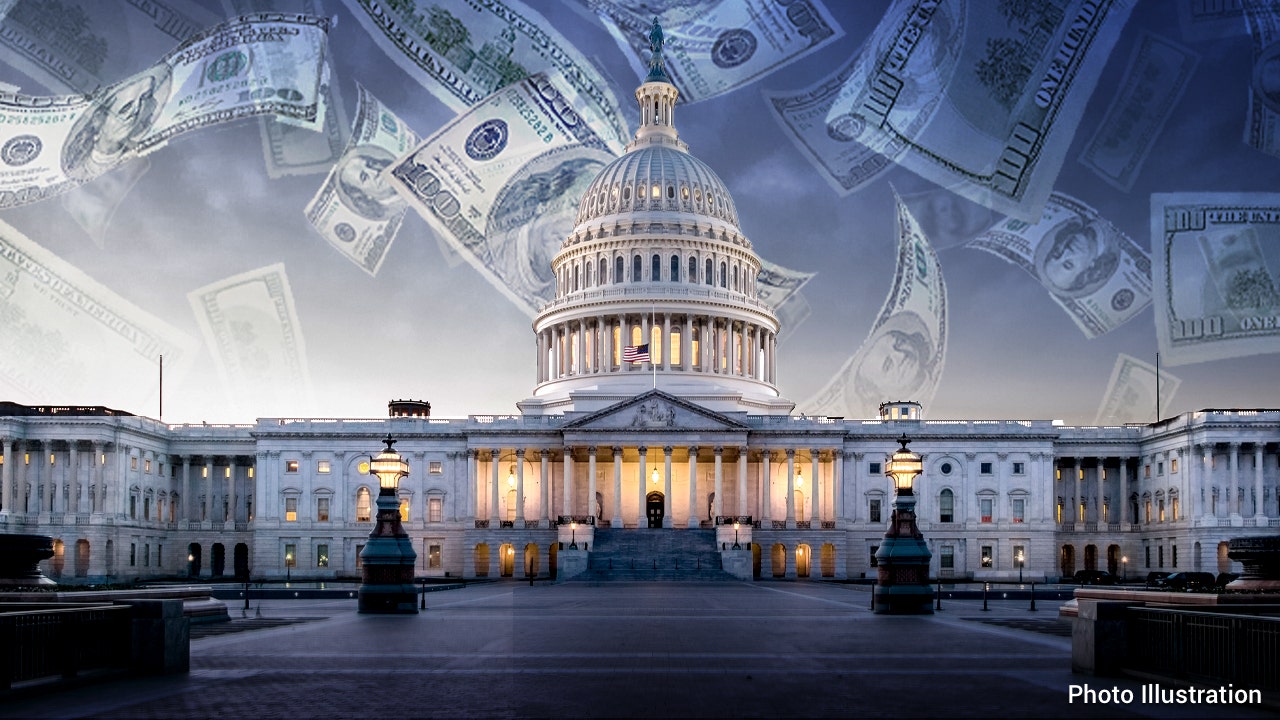Physical Address
304 North Cardinal St.
Dorchester Center, MA 02124
Physical Address
304 North Cardinal St.
Dorchester Center, MA 02124

Economist Peter Morici breaks down what the national debt is, why it’s over $34 trillion and what it means for Americans.
The US national debt is rising rapidly and has shown no signs of slowing down, despite criticism of the high levels of government spending.
The national debt – which measures what the US owes its creditors – rose to $36,171,181,955,284.36 as of December 3, according to the latest numbers published by the Treasury Department. That’s up about $83.8 billion from what was reported the day before.
In comparison, forty years ago, a national debt totaled approximately $907 billion.
The outlook for the federal debt is a worrisome one, with economists increasingly concerned about the increased spending by Congress and the agencies. White House. Paying interest on the debt of the fiscal year of the governmentwhich begins in October, now exceeds the cost of Medicare and the defense budget.
INCREASED INCREASES IN MARRIAGE DEBT TO EMPLOYMENT IN 4 YEARS
Recent data from the Congressional Budget Office show that the national debt will grow to a staggering $54 trillion over the next decade, due to an aging population and a drain on health care spending. High interest rates are adding to the pain of high debt.
If this debt is discovered, it will put America’s financial position at risk in the world.
“America’s economic outlook is more dire and dire than ever, threat to our economy and the next generation,” said Michael Peterson, CEO of the Peter G. Peterson Foundation, which advocates for federal deficit reduction. “This is not the future any of us want, and it is not the way to run a country as big as ours. “
BIG CHANGES, HIGH INTEREST WILL MAKE THE FEDERAL DEBT UNINTERRUPTED
The constant increase is what prompted Fitch Ratings to issue a surprisingly low of the country’s long-term interest rate through 2023. The agency cut the US debt by one notch, removing its AAA rating in exchange for an AA+ rating. In making the decision, Mr. Fitch cited fears over the economic crisis in the country and expressed concern about the government’s ability to deal with debt problems amid political strife.
“This is a warning that the US government needs to right its ship,” Sean Snaith, an economist at the University of Central Florida, told FOX Business. “You can’t just spend billions of dollars more than you earn every year and not expect bad results.”
The growth of the national debt follows the inflation President Biden and democratic parliamentarians.
As of September 2022, Mr. Biden had already approved nearly $4.8 trillion in borrowing, including $1.85 trillion in a COVID-19 aid package called the American Rescue Plan and $370 billion in two infrastructure bills, according to the Committee for Responsible Federal Budget (CRFB), an advocacy group. reduce the deficit.
THE US REPRESENTS THE PLAN TO CONTROL ITS NATIONAL DEBT
While that’s about half of the $7.5 trillion that former President Donald Trump added to the crisis while in office, it’s more than the $2.5 trillion that Trump approved during the same period.
Biden has repeatedly defended his administration’s spending and has boasted about reducing the deficit by $1.7 trillion.
“I can make a serious statement: In my first two years, I reduced the debt by $1.7 trillion. No president has ever done this,” Biden said recently.
However, this number refers to the reduction of the national deficit between the financial years of 2020 and 2022; while the deficit decreased during this period, mainly because emergency procedures were established during this period The covid-19 epidemic it has expired.
The White House has also tried to blame Republicans for the rise in debt in recent years.
“This is the smallest debt — driven largely by repeated Republican donations to big and wealthy corporations,” White House press secretary Michael Kikukawa said in a statement to FOX Business after the debt topped $34 trillion.
US NATIONAL DEBT TOUCHES $34T FOR FIRST TIME IN HISTORY
The biggest concern is that the rise in interest rates over the past year and a half has made the cost of paying off the national debt higher.
This is because interest rates are rising federal government borrowing money on his debt will increase again. In fact, interest payments on the national debt are expected to be the fastest growing part of the federal budget over the next three decades, according to the CRFB.

US Capitol in Washington, DC (Julia Nikhinson/Bloomberg via Getty Images/Getty Images)
CLICK HERE TO READ MORE ON FOX BUSINESS
Payments are expected to triple from about $475 billion in fiscal year 2022 to $1.4 trillion in 2032. By 2053, that amount is expected to rise to $5.4 trillion. To achieve this, this will be more than the US spends on Social Security, Medicare, Medicaid and all other statutory and discretionary programs.
“We are on an unsustainable economic path,” CRFB President Maya MacGuineas said. “We have to do better.”
Although this debt has caused a lot of concern among politicians and budget managers, how should you worry about the speed of the country’s debt?
Experts say that the debt is rising, the US is paying more in interest every year. These losses can cost a lot of human capital that drives economic growth – areas such as education, research and development and infrastructure.
“A country with more debt will have less money that can harm its future,” the Peter G. Peterson Foundation said.
A Pew Research Center survey published in 2023 found that 57% of Americans think reducing the budget deficit should be a priority for the president and Congress – up from just 45% last year.